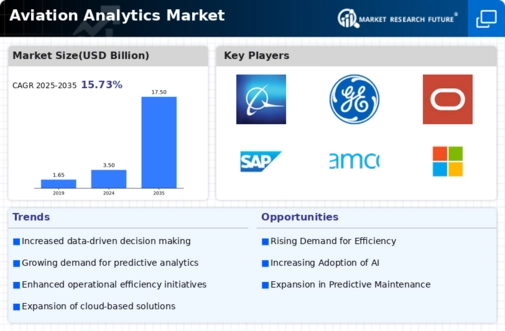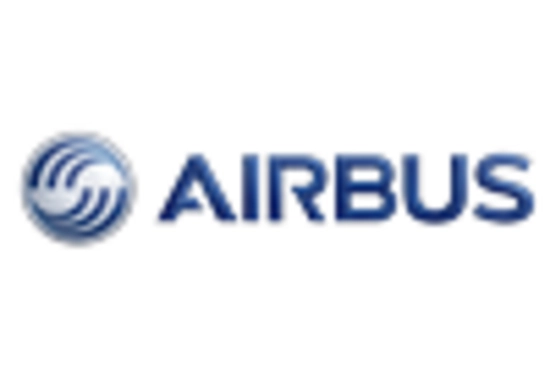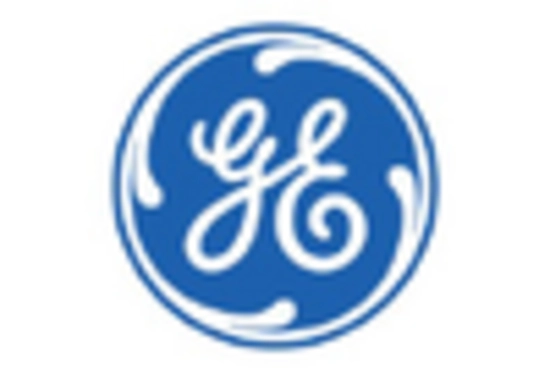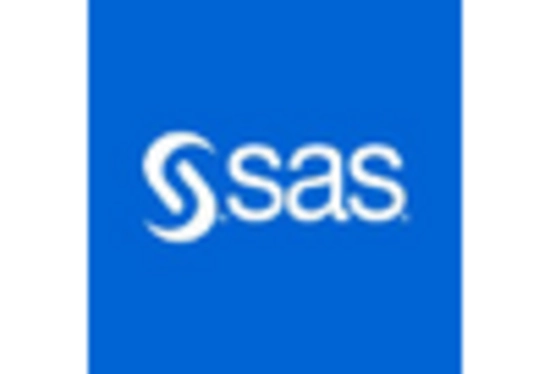-
Executive Summary
-
Market Attractiveness Analysis
- Global Aviation Analytics Market, by Function
- Global Aviation Analytics Market, by End User
- Global Aviation Analytics Market, by Application
- Global Aviation Analytics Market, by Region
-
Market Introduction
-
Market Definition
-
Scope of the Study
-
Market Structure
-
Key Buying Criteria
-
Market Factor Indicator Analysis
-
Research Methodology
-
Research Process
-
Primary Research
-
Secondary Research
-
Market Size Estimation
-
Forecast Model
-
List of Assumptions
-
Market Insights
-
Market Dynamics
-
Introduction
-
Drivers
- Rising Need for Energy and Process Optimization
- Increasing Air Passenger Traffic
- Large-Scale Data Generation
- Drivers Impact Analysis
-
Restraints
- Cybersecurity Threats
- Issues Associated with Data Management
- Restraints Impact Analysis
-
Opportunities
-
Market/Technological Trends
-
Patent Trends
-
Regulatory Landscape/Standards
-
Market Factor Analysis
-
Supply Chain Analysis
- R&D
- Manufacturing
- Distribution & Sales
- Post-Sales Monitoring
-
Porter’s Five Forces Analysis
- Threat of New Entrants
- Bargaining Power of Buyers
- Threat of Substitutes
- Intensity of Rivalry
- Bargaining Power of Suppliers
-
Global Aviation Analytics Market, by Function
-
Introduction
-
Operations
-
Finance
-
Supply Chain
-
Maintenance & Repair
-
Sales & Marketing
-
Global Aviation Analytics Market, by Application
-
Introduction
-
Flight Risk Management
-
Fuel Management
-
Revenue Management
-
Navigation Services
-
Customer Analytics
-
Inventory Management
-
Global Aviation Analytics Market, by End User
-
Introduction
-
Airlines
-
Airports
-
Global Aviation Analytics Market, by Region
-
Introduction
-
North America
- US
- Canada
-
Europe
- UK
- Germany
- France
- Netherlands
- Rest of Europe
-
Asia-Pacific
- China
- India
- Australia
- Japan
- South Korea
- Singapore
- Rest of Asia-Pacific
-
Middle East & Africa
- UAE
- Saudi Arabia
- Rest of the Middle East & Africa
-
Latin America
- Brazil
- Rest of Latin America
-
Competitive Landscape
-
Competitive Overview
-
Competitor Dashboard
-
Major Growth Strategies in the Global Aviation Analytics Market
-
Competitive Benchmarking
-
Market Share Analysis
-
Leading Player in Terms of Number of Developments in the Global Aviation Analytics Market
-
Key Developments & Growth Strategies
- Product Launches/Service Deployments
- Mergers & Acquisitions
- Joint Ventures
-
Company Profiles
-
Key Market Players
-
(Company overview, products & services offered, financial overview, key developments, SWOT analysis, and key strategies to be covered for public companies)
-
Honeywell International, Inc.
-
IBM Corporation
-
Ramco Systems
-
Oracle
-
Boeing
-
Airbus S.A.S.
-
SAP
-
General Electric
-
SAS Institute Inc.
-
Booz Allen Hamilton Inc.
-
Other Prominent Players
-
Aviation Analytics
-
GrayMatter Software Services Inc.
-
Mu Sigma
-
Mercator Group
-
Embraer
-
Microsoft
-
Lufthansa Technik
-
IFS AB
-
Rolls-Royce PLC
-
Appendix
-
References
-
Related Reports
-
List of Abbreviations
-
-
List of Tables
-
List of Assumptions
-
Major Patents Granted for Aviation Analytics (2014–2019)
-
Global Aviation Analytics Market, by Function, 2024–2032 (USD Million)
-
Global Aviation Analytics Market, by End User, 2024–2032 (USD Million)
-
Global Aviation Analytics Market, by Application, 2024–2032 (USD Million)
-
Global Aviation Analytics Market, by Region, 2024–2032 (USD Million)
-
North America: Aviation Analytics Market, by Country, 2024–2032 (USD Million)
-
North America: Aviation Analytics Market, by Function, 2024–2032 (USD Million)
-
North America: Aviation Analytics Market, by End User, 2024–2032 (USD Million)
-
North America: Aviation Analytics Market, by Application, 2024–2032 (USD Million)
-
US: Aviation Analytics Market, by Function, 2024–2032 (USD Million)
-
US: Aviation Analytics Market, by End User, 2024–2032 (USD Million)
-
US: Aviation Analytics Market, by Application, 2024–2032 (USD Million)
-
Canada: Aviation Analytics Market, by Function, 2024–2032 (USD Million)
-
Canada: Aviation Analytics Market, by End User, 2024–2032 (USD Million)
-
Canada: Aviation Analytics Market, by Application, 2024–2032 (USD Million)
-
Europe: Aviation Analytics Market, by Country, 2024–2032 (USD Million)
-
Europe: Aviation Analytics Market, by Function, 2024–2032 (USD Million)
-
Europe: Aviation Analytics Market, by End User, 2024–2032 (USD Million)
-
Europe: Aviation Analytics Market, by Application, 2024–2032 (USD Million)
-
UK: Aviation Analytics Market, by Function, 2024–2032 (USD Million)
-
UK: Aviation Analytics Market, by End User, 2024–2032 (USD Million)
-
UK: Aviation Analytics Market, by Application, 2024–2032 (USD Million)
-
Germany: Aviation Analytics Market, by Function, 2024–2032 (USD Million)
-
Germany: Aviation Analytics Market, by End User, 2024–2032 (USD Million)
-
Germany: Aviation Analytics Market, by Application, 2024–2032 (USD Million)
-
France: Aviation Analytics Market, by Function, 2024–2032 (USD Million)
-
France: Aviation Analytics Market, by End User, 2024–2032 (USD Million)
-
France: Aviation Analytics Market, by Application, 2024–2032 (USD Million)
-
Netherlands: Aviation Analytics Market, by Function, 2024–2032 (USD Million)
-
Netherlands: Aviation Analytics Market, by End User, 2024–2032 (USD Million)
-
Netherlands: Aviation Analytics Market, by Application, 2024–2032 (USD Million)
-
Finland: Aviation Analytics Market, by Function, 2024–2032 (USD Million)
-
Finland: Aviation Analytics Market, by End User, 2024–2032 (USD Million)
-
Finland: Aviation Analytics Market, by Application, 2024–2032 (USD Million)
-
Rest of Europe: Aviation Analytics Market, by Function, 2024–2032 (USD Million)
-
Rest of Europe: Aviation Analytics Market, by End User, 2024–2032 (USD Million)
-
Rest of Europe: Aviation Analytics Market, by Application, 2024–2032 (USD Million)
-
Asia-Pacific: Aviation Analytics Market, by Country, 2024–2032 (USD Million)
-
Asia-Pacific: Aviation Analytics Market, by Function, 2024–2032 (USD Million)
-
Asia-Pacific: Aviation Analytics Market, by End User, 2024–2032 (USD Million)
-
Asia-Pacific: Aviation Analytics Market, by Application, 2024–2032 (USD Million)
-
China: Aviation Analytics Market, by Function, 2024–2032 (USD Million)
-
China: Aviation Analytics Market, by End User, 2024–2032 (USD Million)
-
China: Aviation Analytics Market, by Application, 2024–2032 (USD Million)
-
India: Aviation Analytics Market, by Function, 2024–2032 (USD Million)
-
India: Aviation Analytics Market, by End User, 2024–2032 (USD Million)
-
India: Aviation Analytics Market, by Application, 2024–2032 (USD Million)
-
Japan: Aviation Analytics Market, by Function, 2024–2032 (USD Million)
-
Japan: Aviation Analytics Market, by End User, 2024–2032 (USD Million)
-
Japan: Aviation Analytics Market, by Application, 2024–2032 (USD Million)
-
Australia: Aviation Analytics Market, by Function, 2024–2032 (USD Million)
-
Australia: Aviation Analytics Market, by End User, 2024–2032 (USD Million)
-
Australia: Aviation Analytics Market, by Application, 2024–2032 (USD Million)
-
South Korea: Aviation Analytics Market, by Function, 2024–2032 (USD Million)
-
South Korea: Aviation Analytics Market, by End User, 2024–2032 (USD Million)
-
South Korea: Aviation Analytics Market, by Application, 2024–2032 (USD Million)
-
Singapore: Aviation Analytics Market, by Function, 2024–2032 (USD Million)
-
Singapore: Aviation Analytics Market, by End User, 2024–2032 (USD Million)
-
Singapore: Aviation Analytics Market, by Application, 2024–2032 (USD Million)
-
Rest of Asia-Pacific: Aviation Analytics Market, by Function, 2024–2032 (USD Million)
-
Rest of Asia-Pacific: Aviation Analytics Market, by End User, 2024–2032 (USD Million)
-
Rest of Asia-Pacific: Aviation Analytics Market, by Application, 2024–2032 (USD Million)
-
Middle East & Africa: Aviation Analytics Market, by Country, 2024–2032 (USD Million)
-
Middle East & Africa: Aviation Analytics Market, by Function, 2024–2032 (USD Million)
-
Middle East & Africa: Aviation Analytics Market, by End User, 2024–2032 (USD Million)
-
Middle East & Africa: Aviation Analytics Market, by Application, 2024–2032 (USD Million)
-
UAE: Aviation Analytics Market, by Function, 2024–2032 (USD Million)
-
UAE: Aviation Analytics Market, by End User, 2024–2032 (USD Million)
-
UAE: Aviation Analytics Market, by Application, 2024–2032 (USD Million)
-
Saudi Arabia: Aviation Analytics Market, by Function, 2024–2032 (USD Million)
-
Saudi Arabia: Aviation Analytics Market, by End User, 2024–2032 (USD Million)
-
Saudi Arabia: Aviation Analytics Market, by Application, 2024–2032 (USD Million)
-
Rest of the Middle East & Africa: Aviation Analytics Market, by Function, 2024–2032 (USD Million)
-
Rest of the Middle East & Africa: Aviation Analytics Market, by End User, 2024–2032 (USD Million)
-
Rest of the Middle East & Africa: Aviation Analytics Market, by Application, 2024–2032 (USD Million)
-
Latin America: Aviation Analytics Market, by Country, 2024–2032 (USD Million)
-
Latin America: Aviation Analytics Market, by Function, 2024–2032 (USD Million)
-
Latin America: Aviation Analytics Market, by End User, 2024–2032 (USD Million)
-
Latin America: Aviation Analytics Market, by Application, 2024–2032 (USD Million)
-
Brazil: Aviation Analytics Market, by Function, 2024–2032 (USD Million)
-
Brazil: Aviation Analytics Market, by End User, 2024–2032 (USD Million)
-
Brazil: Aviation Analytics Market, by Application, 2024–2032 (USD Million)
-
Rest of Latin America: Aviation Analytics Market, by Function, 2024–2032 (USD Million)
-
Rest of Latin America: Aviation Analytics Market, by End User, 2024–2032 (USD Million)
-
Rest of Latin America: Aviation Analytics Market, by Application, 2024–2032 (USD Million)
-
The Most Active Players in the Global Aviation Analytics Market
-
Contracts & Agreements
-
Mergers & Acquisitions
-
Product/Service Developments
-
Expansions & Investments
-
Joint Ventures & Partnerships
-
-
List of Figures
-
Market Synopsis
-
Global Aviation Analytics Market: Market Attractiveness Analysis
-
Global Aviation Analytics Market Analysis, by Function
-
Global Aviation Analytics Market Analysis, by End User
-
Global Aviation Analytics Market Analysis, by Application
-
Global Aviation Analytics Market Analysis, by Region
-
Global Aviation Analytics Market: Market Structure
-
Key Buying Criteria for Aviation Analytics Technologies
-
Research Process of MRFR
-
North America: Market Size & Market Share, by Country, 2024 vs 2032
-
Europe: Market Size & Market Share, by Country, 2024 vs 2032
-
Asia-Pacific: Market Size & Market Share, by Country, 2024 vs 2032
-
Middle East & Africa: Market Size & Market Share, by Country, 2024 vs 2032
-
Latin America: Market Size & Market Share, by Country, 2024 vs 2032
-
Market Dynamics Overview
-
Drivers Impact Analysis: Global Aviation Analytics Market
-
Restraints Impact Analysis: Global Aviation Analytics Market
-
Porter’s Five Forces Analysis of the Global Aviation Analytics Market
-
Supply Chain: Global Aviation Analytics Market
-
Global Aviation Analytics Market Share, by Function, 2024 (% Share)
-
Global Aviation Analytics Market Share, by Application, 2024 (% Share)
-
Global Aviation Analytics Market Share, by End User, 2024 (% Share)
-
Global Aviation Analytics Market Share, by Region, 2024 (% Share)
-
North America: Aviation Analytics Market Share, by Country, 2024 (% Share)
-
Europe: Aviation Analytics Market Share, by Country, 2024 (% Share)
-
Asia-Pacific: Aviation Analytics Market Share, by Country, 2024 (% Share)
-
Middle East & Africa: Aviation Analytics Market Share, by Country, 2024 (% Share)
-
Latin America: Aviation Analytics Market Share, by Country, 2024 (% Share)
-
Competitor Dashboard: Global Aviation Analytics Market
-
Capital Market Ratio and Financial Matrix
-
Contracts & Agreements: The Major Strategy Adopted by Key Players in the Global Aviation Analytics Market
-
Benchmarking of Major Competitors
-
Major Service Providers Market Share Analysis, 2024
-
"









Leave a Comment